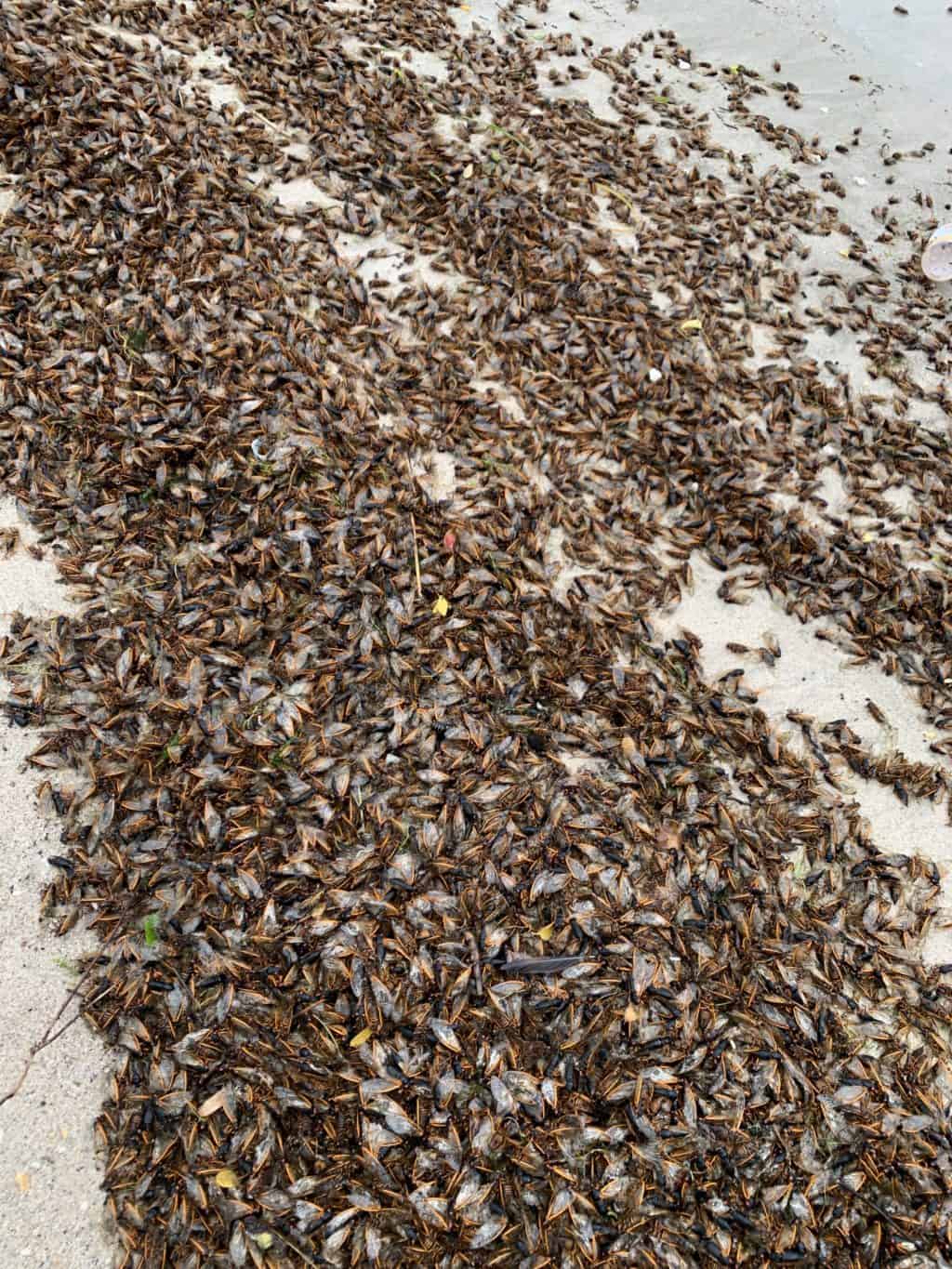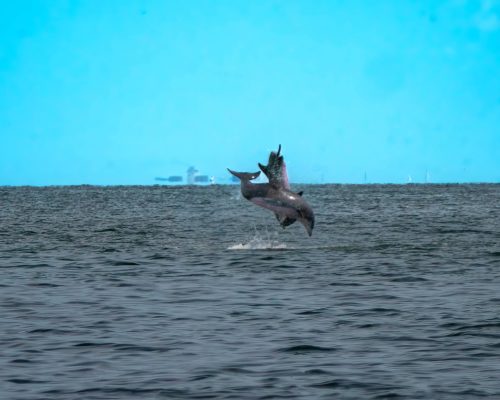Over the weekend, the cicadas of Brood X began washing onto the shores of the Bay in piles that could be seen from far away and smelled from even farther. Science fiction-style photos made the rounds on social media. But experts say there’s a simple explanation.
“I think this is pretty straightforward, no mysteries here,” said University of Maryland entomology professor Michael Raupp.
Raupp said his best guess was that offshore breezes and the heavy storms we received over the weekend pulled the cicadas into the Bay, causing them to wash up in piles. Though only speculation, he said this lines up with what we know about a cicada’s ability to fly.
“These guys are not strong flyers, they’re going to run out of gas,” Raupp said “If you’ve watched these things fly, they don’t fly far.”
Raup explained that if the cicadas were to hit a downdraft over the Bay, they’d be deposited into the water where the fish could eat their fill. The rest would begin to float back home over a period of several hours, he said.
Kelly McGarvey sent us eye-popping photos of a sandy beach at Herring Bay blanketed in a solid layer of cicadas. And on Monday, quite a few still littered Brownie’s Beach along the Chesapeake Bay in Calvert County.
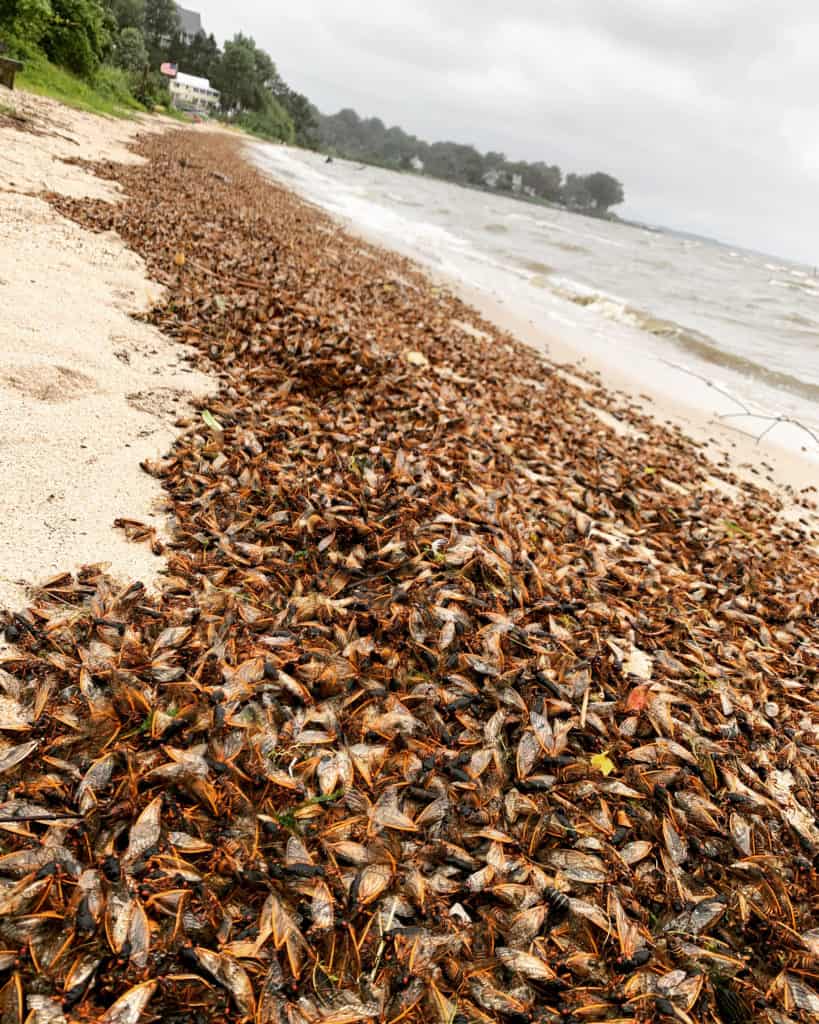
Herring Bay photo: Kelly McGarvey 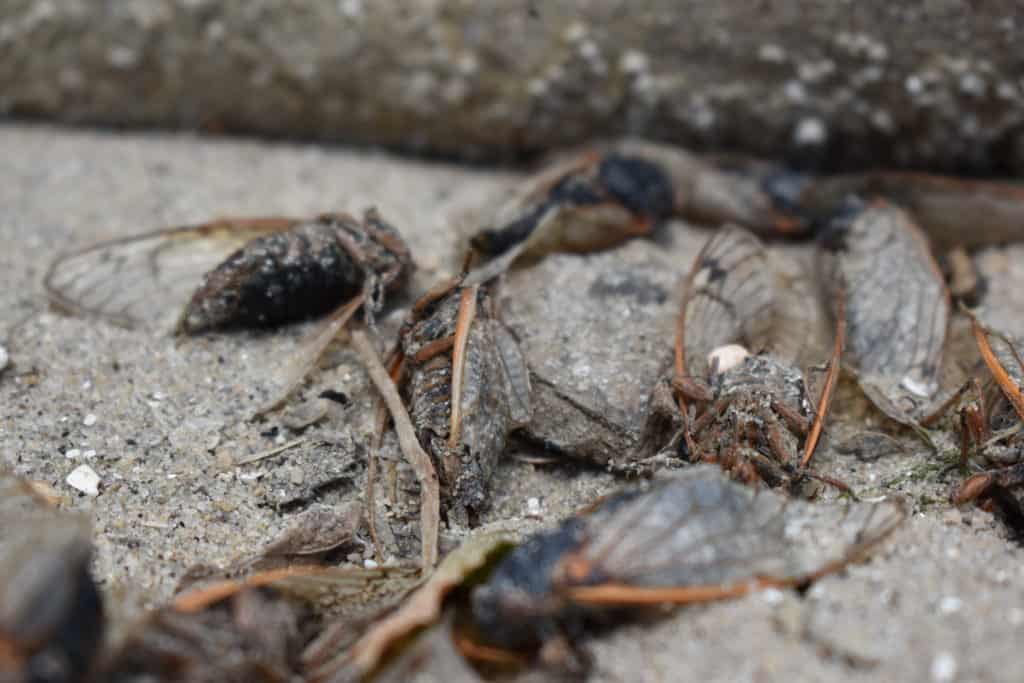
Brownie’s Beach photo: Charlie Youngmann 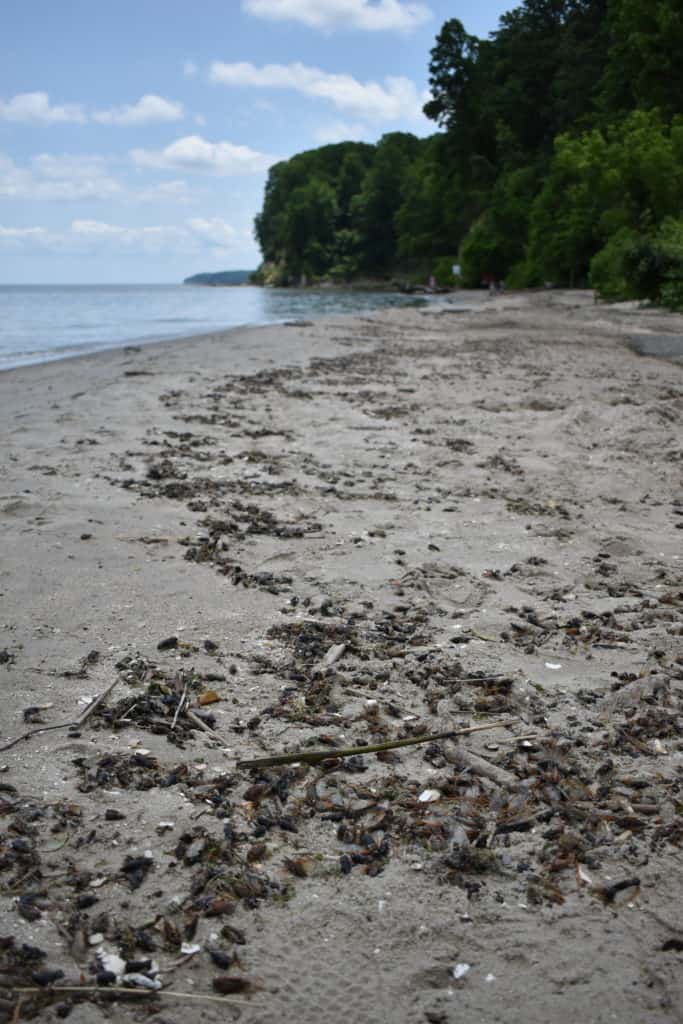
Brownie’s Beach photo: Charlie Youngmann 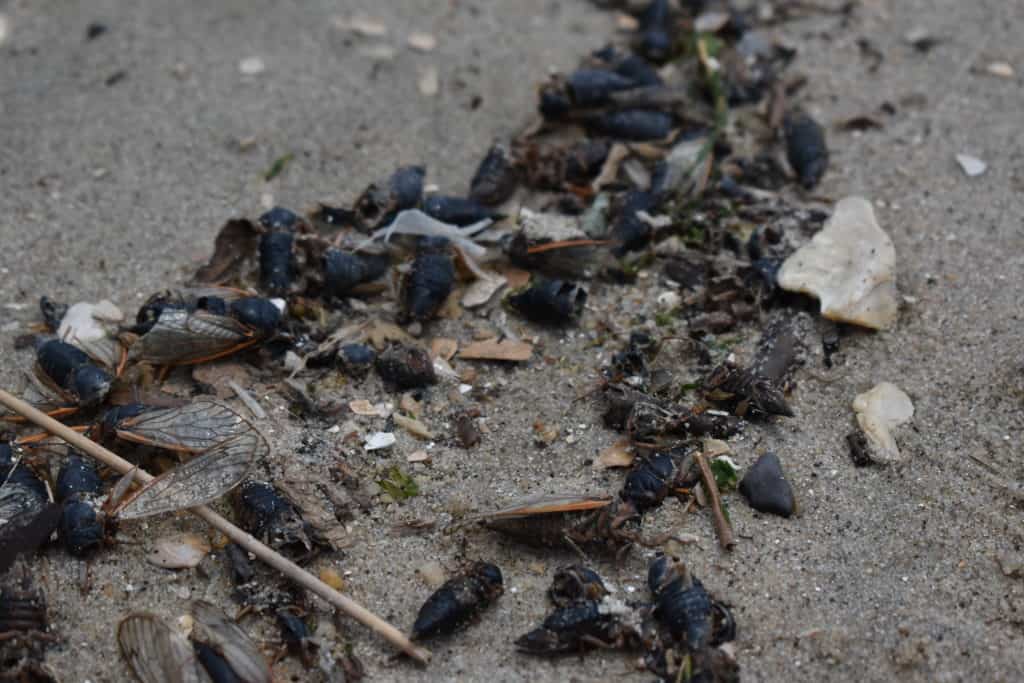
Brownie’s Beach photo: Charlie Youngmann
Considering the thousands of cicadas scattered across the grass and concrete we walk through every day, it’s not surprising to find this many accumulated where the tide can push them in, Raupp said.
Though the journey of Brood X began more than 17 years ago in the roots of the forest, for many it ended in the tidewrack along the beach.
–Charlie Youngmann

